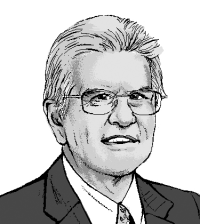Before Azusa Street: Brazilian Pentecostalism
Any account of the modern expansion of Christianity worldwide must pay respectful attention to Pentecostal and charismatic forms of worship. In Latin America, and most conspicuously in Brazil, this tradition accounts for virtually all of the vast growth of Protestant churches in the past 30 years.
But here is a riddle. If, as all the histories tell us, the Pentecostal movement began with a revival in California in 1906, why is it that some of the shrewdest and most historically informed commentary on the phenomenon appears in a Brazilian book written several years before that date? Historical curiosity apart, reading Os Sertões, or Rebellion in the Backlands (1902), by Euclides da Cunha, forces us to rethink the modern Pentecostal movement.
The story begins in 1893 with the emergence of yet another would-be messiah in Brazil, a prophet who foretold the imminent end of the worldly order. The man, Antônio, claimed to be the Counselor promised by Christ in his farewell discourses; alternatively, he was the vastly popular St. Anthony come again in the flesh. As Antônio Conselheiro, he attracted a mass following among marginal people, many of whom were freed slaves or people of mixed race. He led his faithful to Canudos, which became a mighty fortress in Brazil’s vast undeveloped hinterland, the Sertões. Da Cunha accompanied the government forces sent against the movement, which crumbled following a dreadful slaughter in 1897.
Trying to understand this vast and baffling phenomenon, da Cunha wrote an encyclopedic account of the movement, the region and the landscape, which is regarded as the monumental work of Brazilian literature. And much of what he says concerns Antônio’s religion—which he places firmly in the history of Brazil, of Catholicism and, more strikingly, of Christianity itself.
For da Cunha, nobody should be surprised at the eruption of charismatic or apocalyptic movements among a people so deeply imbued with Catholic mysticism. Brazil was heir to “a multitude of extravagant superstitions.” The first Catholic settlers were themselves fascinated by miracles and “mysterious tongues of flame.” Reinforcing these ideas were the beliefs of various immigrant communities, especially those of African former slaves.
But far from placing Antônio on the far fringes of Christianity, of consigning him to syncretism, da Cunha knew history well enough to understand just how closely the prophet stood to Christians of the first centuries of the faith, and to those prophets in Asia Minor who followed Montanus and his band of inspired women. In Antônio’s rigid asceticism and regard for chastity, “he outlines a morality which is a line-for-line translation of that of Montanus.” In dazzling detail, da Cunha shows that Antônio was in fact “a second-century heresiarch in the modern world.”
Yet a humble man like Antônio could never have delved into the patristic sources that would have taught him these doctrines, or those of the other prophetic/millenarian movements that have surfaced so regularly throughout Christian history (and to which da Cunha also relates him). Rather than drawing on a conscious tradition, the Brazilian movement was tapping into a subterranean stream of charismatic belief that emerges in the New Testament and flows through all Christianity, however vigorously the churches try to dam or channel it.
If that is the case, then we can more easily understand why Antônio’s movement looks so startlingly modern, and so strongly prefigures so many Pentecostal churches in Latin America and Asia and so many independent congregations in Africa. Although later Pentecostal churches know nothing of this turbulent predecessor, they follow precisely in his path. Da Cunha could be describing a thousand congregations in modern-day Brazil when he describes the believers who followed Antônio into the wilderness. His hearers, overwhelmingly poor, were drawn from traditionally excluded racial and ethnic groups: “all ages, all types, all shades of racial coloring.” And as in a modern congregation, women believers were very much in evidence.
Antônio’s claims to direct access to the Holy Spirit make him a forerunner of the countless modern preachers who have successfully channeled the mystical impulse into a spate of flourishing denominations. Like them, Antônio offered millenarian preaching, together with a “mixture of dogmatic counsels, the vulgar precepts of Christian morality, and weird prophecies.” Then as now, the whole was entangled with a stern Puritanism and strong doses of anticlerical and anti-Catholic fervor.
So our riddle has an answer. While the modern Pentecostal movement is indeed only a century old, it builds on much deeper impulses within Christianity. Appreciating that helps us understand just why those particular forms of belief have boomed so astonishingly in modern times.






